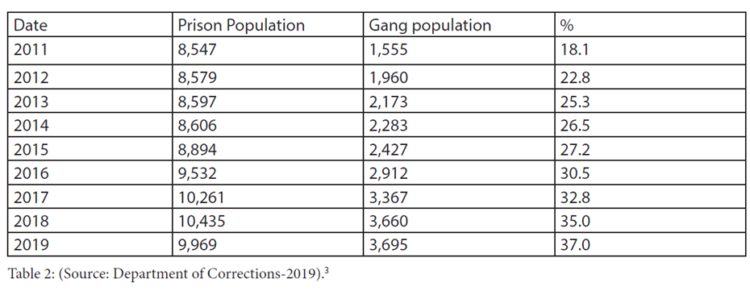Author: Bradley, C
Published in National Security Journal, 15 May 2020
capitalist system in Aotearoa New Zealand. Violence and rebellion align to a desire to attain material wealth available in the shadow economy, itself a social and economic response to neo-liberal capitalism with an alignment to criminal innovation.
General Strain Theory developed by Robert Agnew has been in favour since the 1990s and tends to look at the individual and the different classes rather than the whole structure.26 The main types of strain for Agnew consist of goal blockage, noxious or negatively valued stimuli and the inability for whatever reason to satisfy strong desires for money, excitement and masculine status.27 It is contented here that while it is important to recognise the role that these more defined strains play on individual decision-making and behaviours, Merton’s strain theory has equal relevance in today’s environment and should not be dismissed out of hand. Both Merton’s adaptations and Agnew’s advancement in the form of General Strain Theory, and more individually focused responses, can be applied to explain the reactions of the powerless and such strain wrapped up with the desire for status, respect and power.
For some, the effects of economic and class marginalisation under successive governments and policy decisions suggests that the shadow economy provides a means to earn money in a system dominated by capitalist ideals, albeit in the trade of illicit goods. For some, class exclusion saw moves into counterculture and shadow economics a viable option. While aspects of social and economic dislocation were not the only factors offering reasons for some young people to form and join such groups, who often displayed anti-social or counter-cultural behaviours, unemployment, urbanisation and the loss of social and in some cases parental controls added to the allure of sub-cultural deviant groups like gangs.28 Such sub-cultural systems based on economic hardship can be used to explain the existence of gangs and gang membership within a modern liberal democratic society. Patched gangs in Aotearoa New Zealand tend to “proliferate” in lower class areas characterised by high unemployment, low wages, restricted opportunity, boredom, alienation and anomie.29
Table 2
________________________________
3 Prisoners are identified through various means such as gang tattoos/markings, gang documentation such as gang tattoos/markings, gang documentation/paraphernalia, information for other agencies, admission to staff, staff observations and intelligence information from other sources (Department of Corrections-2019).
